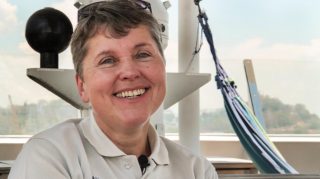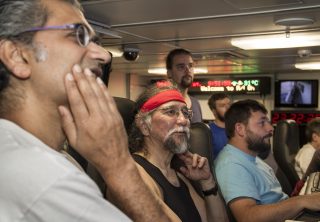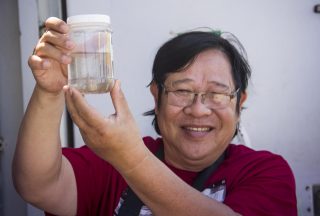What comes to mind when you think of the ocean? Waves, vastness, blue, or the many things that it contains. You may picture dolphins or fish, if you really know your stuff you might even imagine microclines or currents. The scientific party onboard of R/V Falkor is a little different. When they look at the ocean, C, N and P are some of the first things that pop into their minds, and they have good reasons for it.
Carbon, Nitrogen and Phosphorus are nutrients found in the ocean, and their balance is key. For many years, human activities have meddled with that equilibrium, overwhelming the ocean and forcing it to digest everything that we pour into it. They take inert nitrogen from the air and transform it into nitrates and other substances that plants can digest. Humans emit huge amounts of carbon dioxide, some of which mixes with the seawater and acidifies the oceans. Phosphorus, a limited natural resource only found at certain places in high concentrations, is now being spread around the world because it is heavily used as a fertilizer.

When it comes to the Nitrogen Cycle, Dr. Maren Voss is concerned; “we take fertilizers from the air, and convert it into something that is bio-available to all plants on the planet. We have managed to mobilize as much inert nitrogen as all the nitrogen fixing plants would convert naturally”. We don’t know how long our planet will be able to keep up with the amount of nitrogen that we are artificially adding to it.
Frame by Frame

If you follow the nutrients, you will quickly stumble into different microbial communities of plankton.“Nitrogen, Carbon and Phosphorus are three essential nutrients. Changes in their quantities affect which phytoplankton grows and in turn this affects the food web” explains Dr. Ajit Subramaniam, who strives to understand why particular kinds of phytoplankton bloom, and the consequences of such blooms.
In order to understand how our oceans are changing, it is necessary to take a close look at what is going on with plankton. It is not only the very base of the food chain but also provides several key services, such as removing carbon dioxide from the water and atmosphere, and fixing nitrogen.
The Plot Thickens

There are different ways in which nutrients and biochemicals enter the ocean and they all converge on the South China Sea during monsoon season: heavy rains, strong winds and the upwelling of deep water. Biochemicals rush into the sea via the Mekong; while at the same time cold, nutrient-rich waters emerge from the depths of the ocean.
That is why the scientists onboard R/V Falkor “clean water” every day. Or at least that is how Sarah Weber, PhD student in Biological Oceanography, puts it. “We collect water samples and we filter and clean them until we are able to identify the different kinds of plankton and substances we are interested in”. Once the scientific team has “cleaned” the samples, they allow the numbers to come together and start revealing the full story.
Nitrogen, Carbon and Phosphorus may be tiny particles. Plankton may be microscopic. But they are not to be underestimated. Slowly but surely they are transforming our ocean’s chemistry, from the very bottom up.

